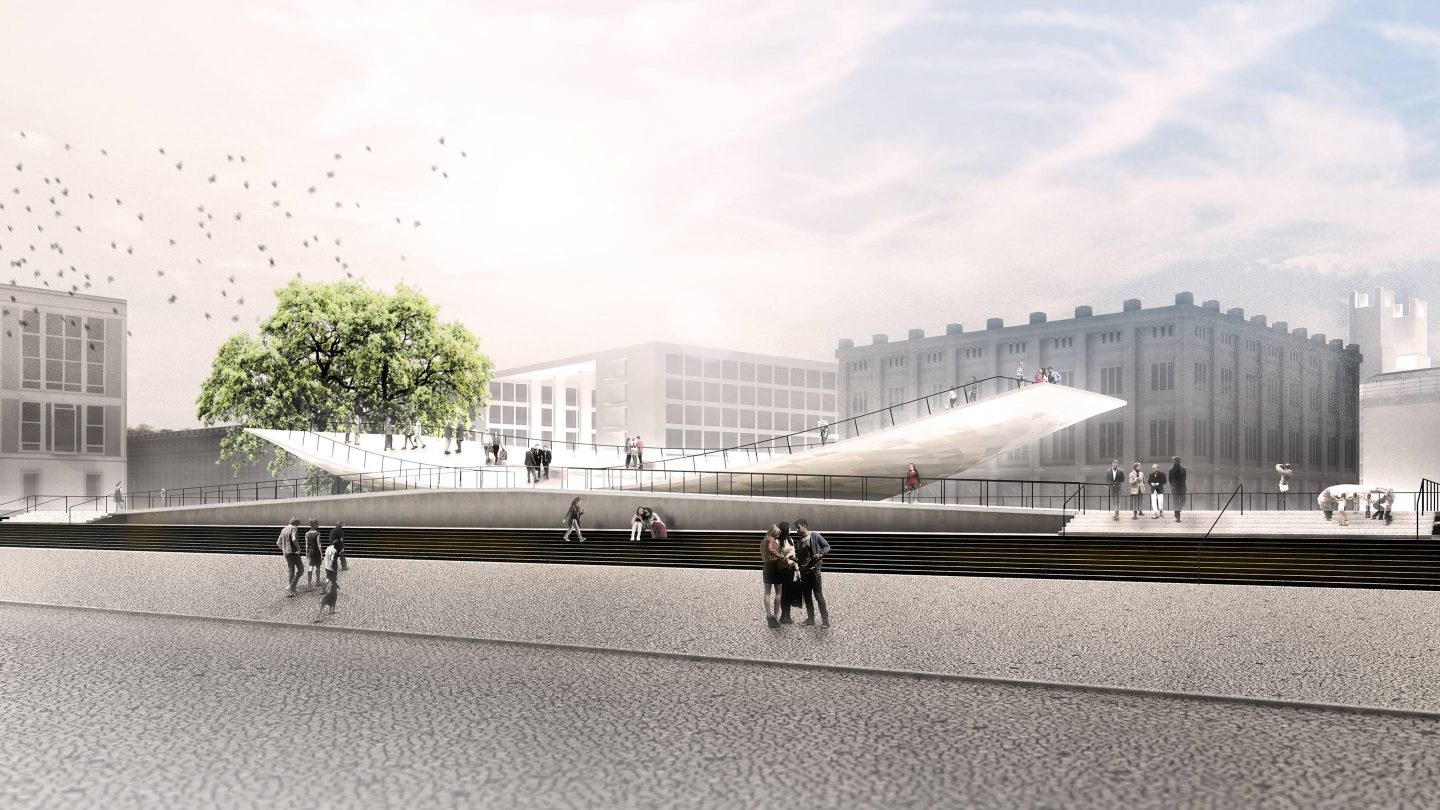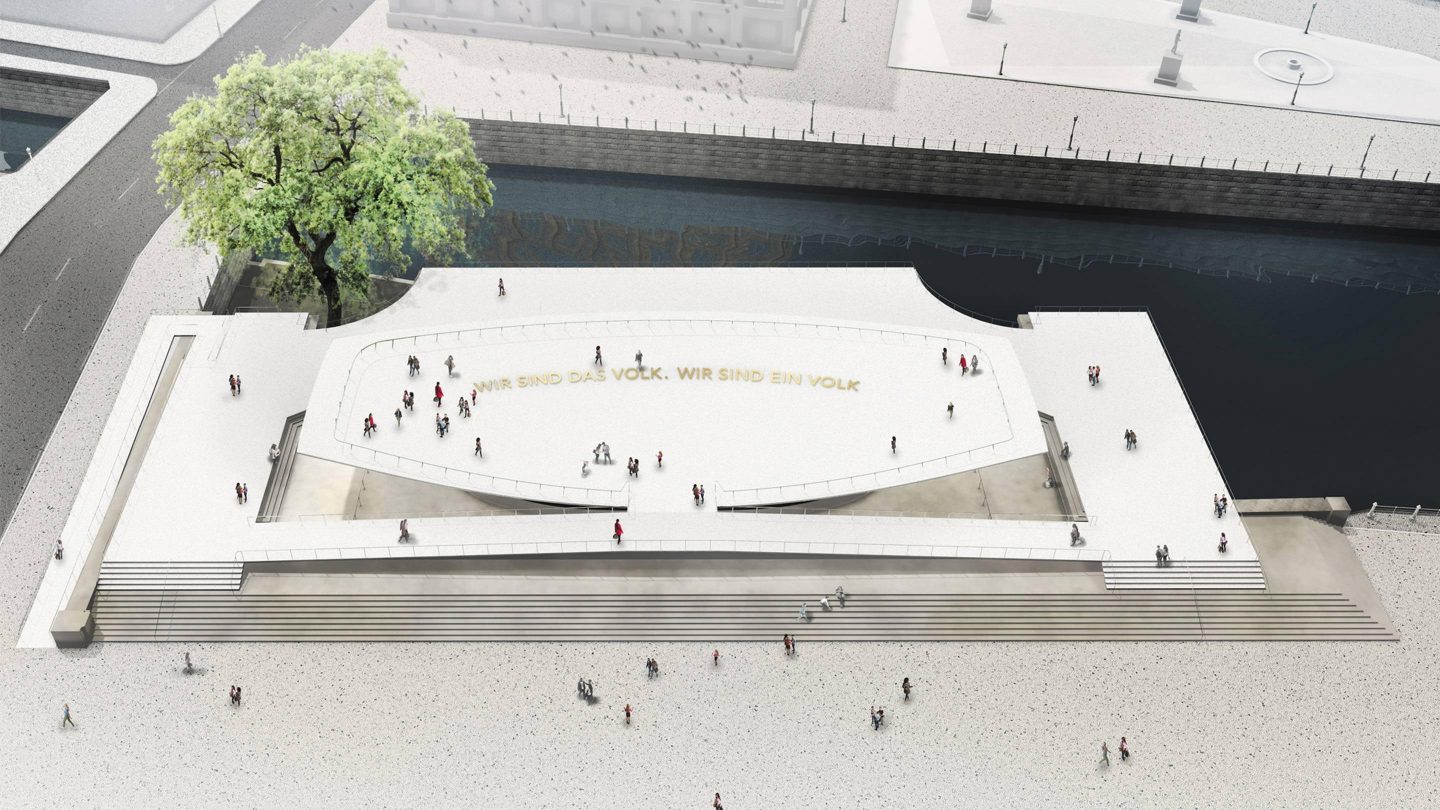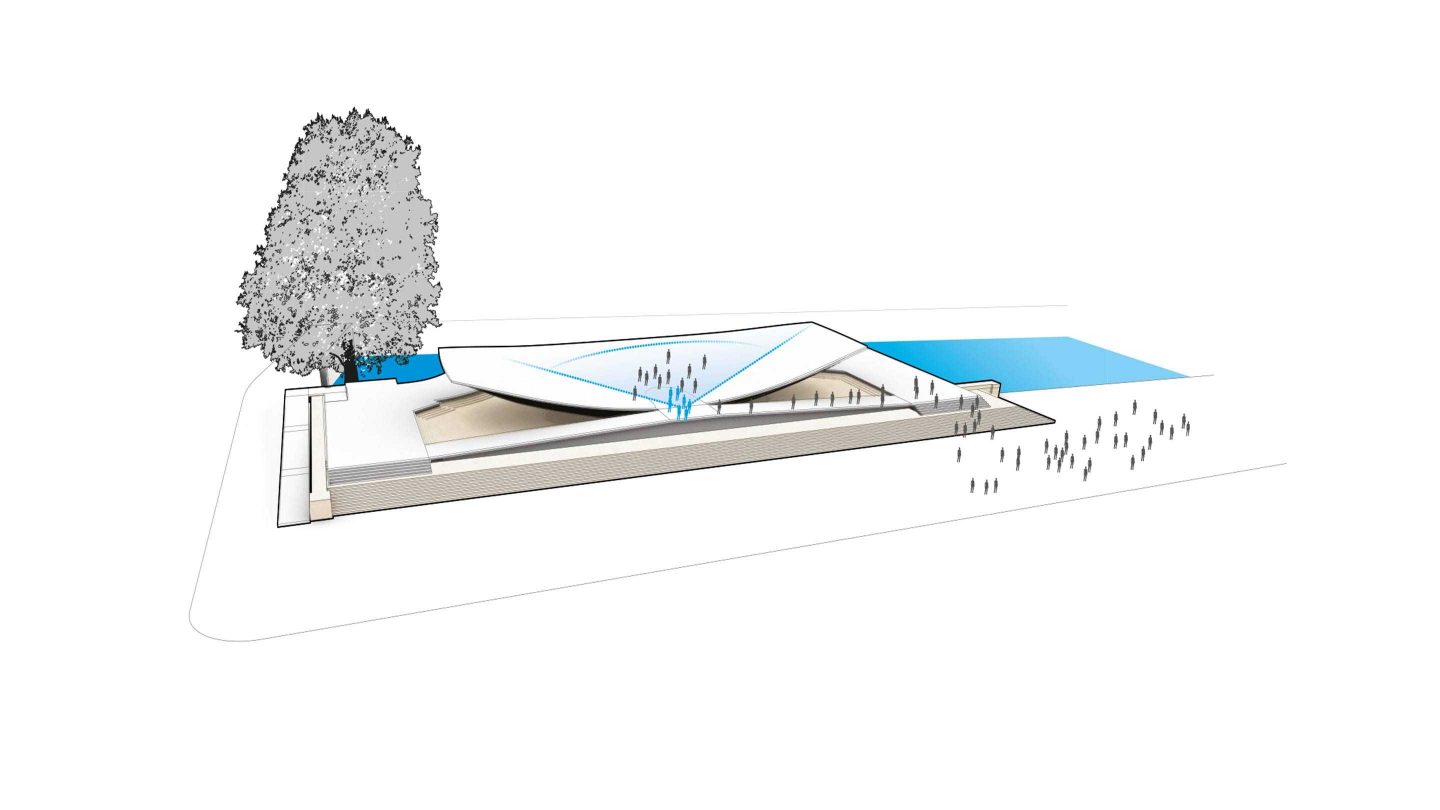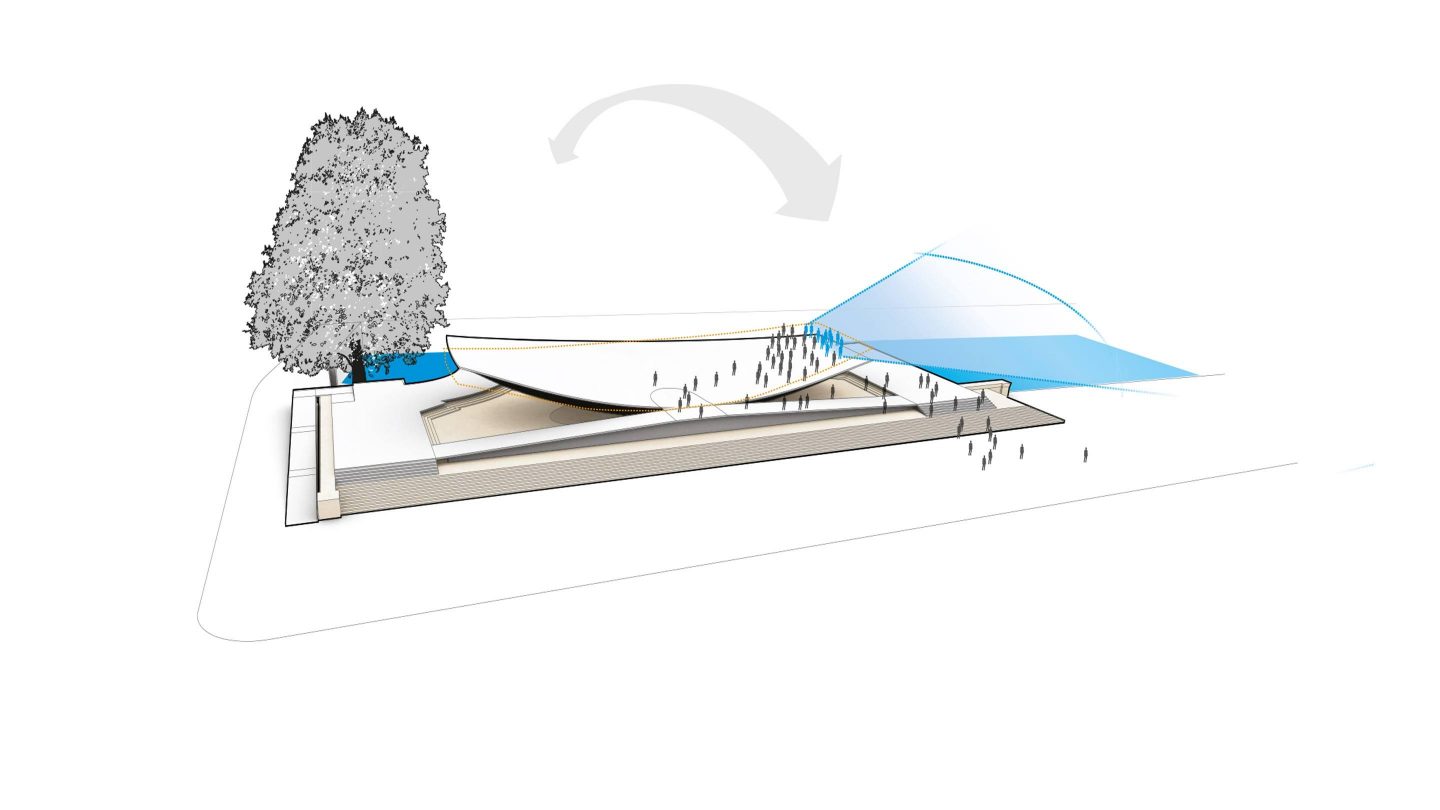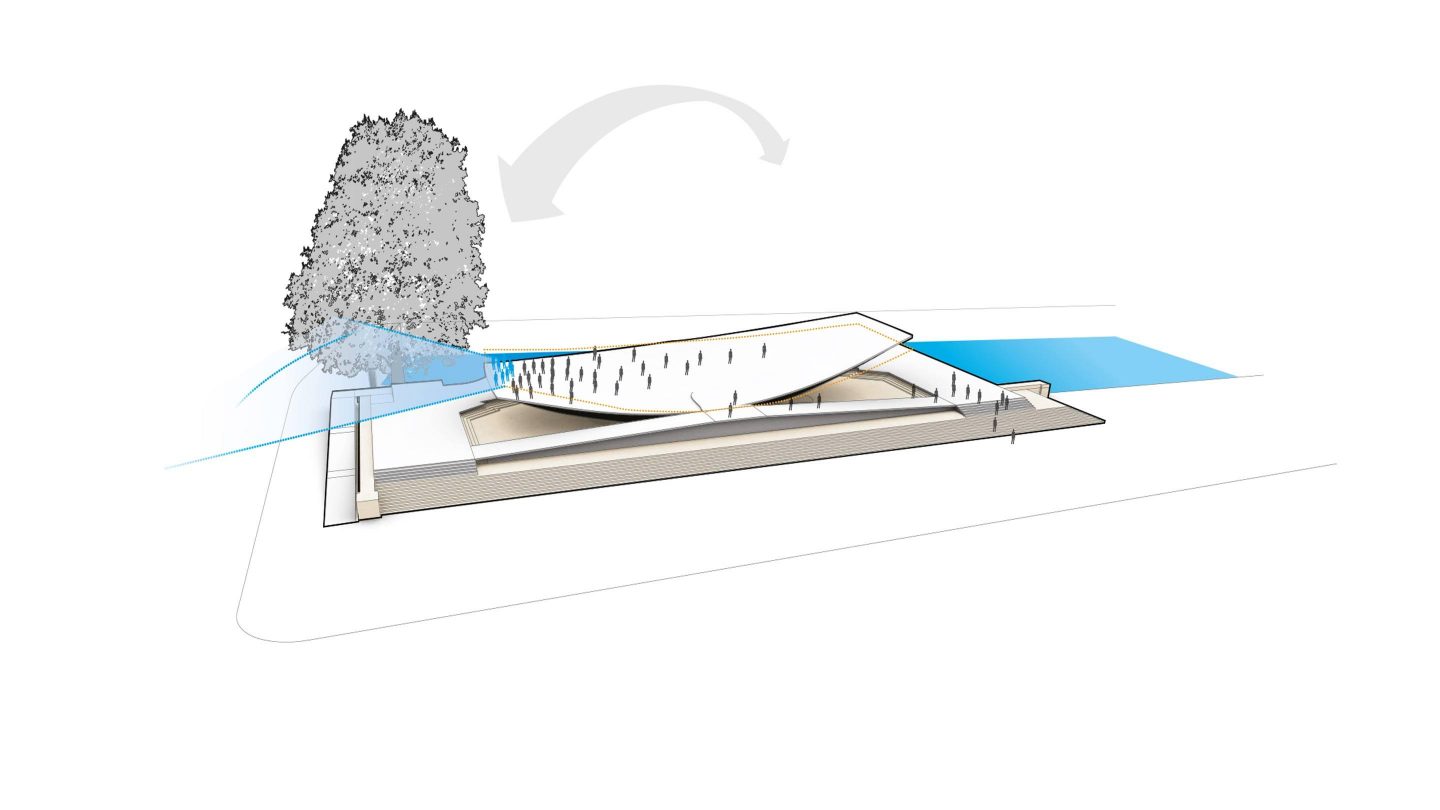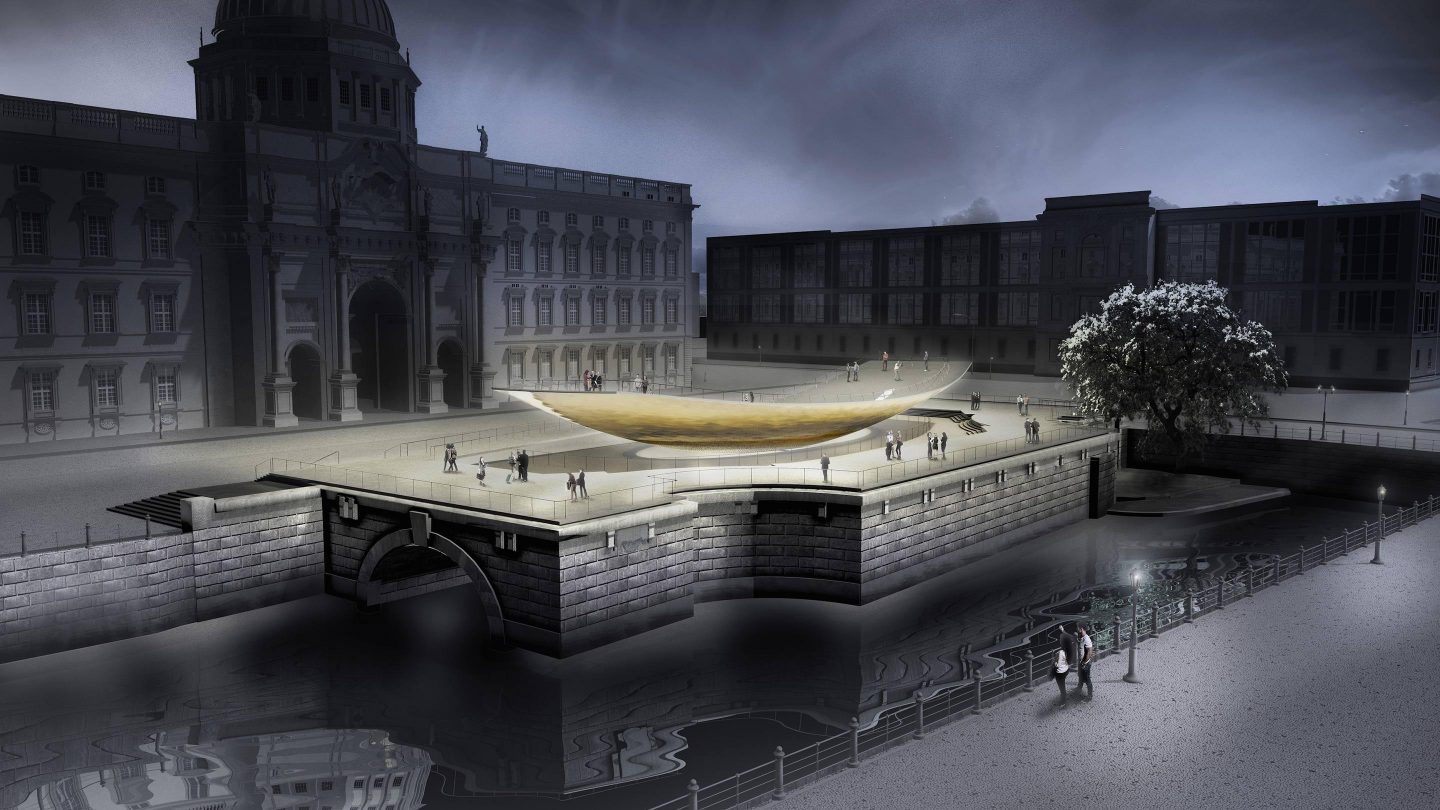A social sculpture In the heart of berlin
The memorial is designed as a kinetic object, a platform enabling people to interact with each other. Its appearance will be shaped by visitors through their participation and interaction.
The memorial will honour the men and women who, in a peaceful revolution in 1989, caused the Berlin Wall to come down and Germany to be reunited. The monument invites visitors to communicate and to act together. The movement will be achieved by visitors working together as a group: by the strength of their movement, it will come alive. It will be animate and not merely an object for contemplation.
FREEDOM AND UNITY AREN´T STATIC CONDITIONS
They require participation and interaction. As with the peaceful revolution of 1989, people need to communicate and decide on joint action, in order to create the motion. It shows the strength in numbers: when there are at least 30 more people standing on one half of the bowl than on the other, the bowl will start to move, slowly and gently. New perspectives open up. The performative, changing nature of the monument is something to be seen and personally experienced.
Sebastian Letz, Architect and Creativ Director„The monument is a social sculpture. It comes to life when people gather, communicate and move together. It´s an invitation to participation and an image of genuine democracy.”
THE EVENTFUL HISTORY OF THE LOCATION REMAINS APPARENT
The Monument to Freedom and Unity will be erected in the centre of Berlin – a modern design statement contrasting the current drift towards historical resurrection. It will be built on the existing plinth of the former equestrian statue of Kaiser Wilhelm I., a Wilhelmine monument which wasn´t destroyed during the Second World War, but was removed by the GDR regime in 1949. As a contemporary architectonic layer, this principle makes it possible to combine the different levels of the old monument and the new without blurring the differences. The chequered history of the location is still there to see.
DIGRESSION INTO TECHNOLOGY, Extensive testing on a 1:1 scale
The monument is constructed using a weight-optimised space frame made of steel components, as is familiar from bridge construction. It extends over a longitudinal and transverse axis of 50 and 18 metres. At its strongest point, it measures 2.50 metres and tapers to the edge to within a few centimetres. The slow movement is triggered by the visitors. Their weight determines the degree and speed of the inclination. A combined spring and damping system ensures that the movement is always gentle.
The monument is a dynamic object that will be moved in slow motion by visitors. It is unique in form, content, interaction principle and its technological challenges. This requires extensive testing on a 1:1 scale.
Plans in terms of gradients and the speed of movement of man and object were tested on a drawbridge in Mannheim which has almost identical dimensions to those of one half of the monument. Further long-term testing took place: the surfaces of the monument, the angle of inclination, the accessibility and impact for the visitors were tested on the basis of a 1:1 earth model. People of different ages, from different backgrounds and in diverse group-dynamic constellations strolled, walked, ran and filled the monument.
PRESS INFORMATION
Download Concept Facts Figures Monument to Freedom and Unity: Fed Concept
Scope of work
- Concept
- Design
- Artistic and conceptual construction supervision
- Project management
- Controlling
- Implementation of the project as general contractor


